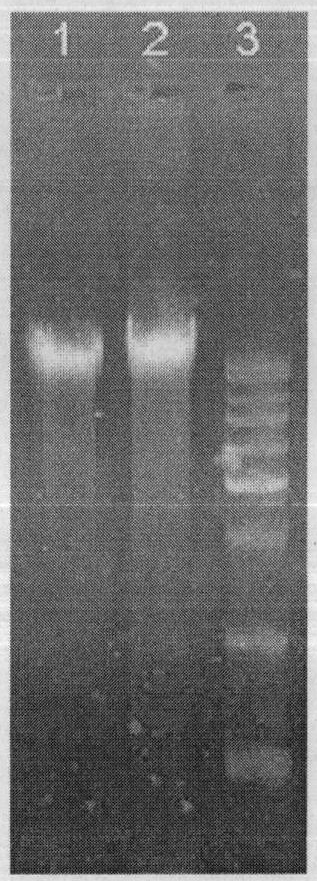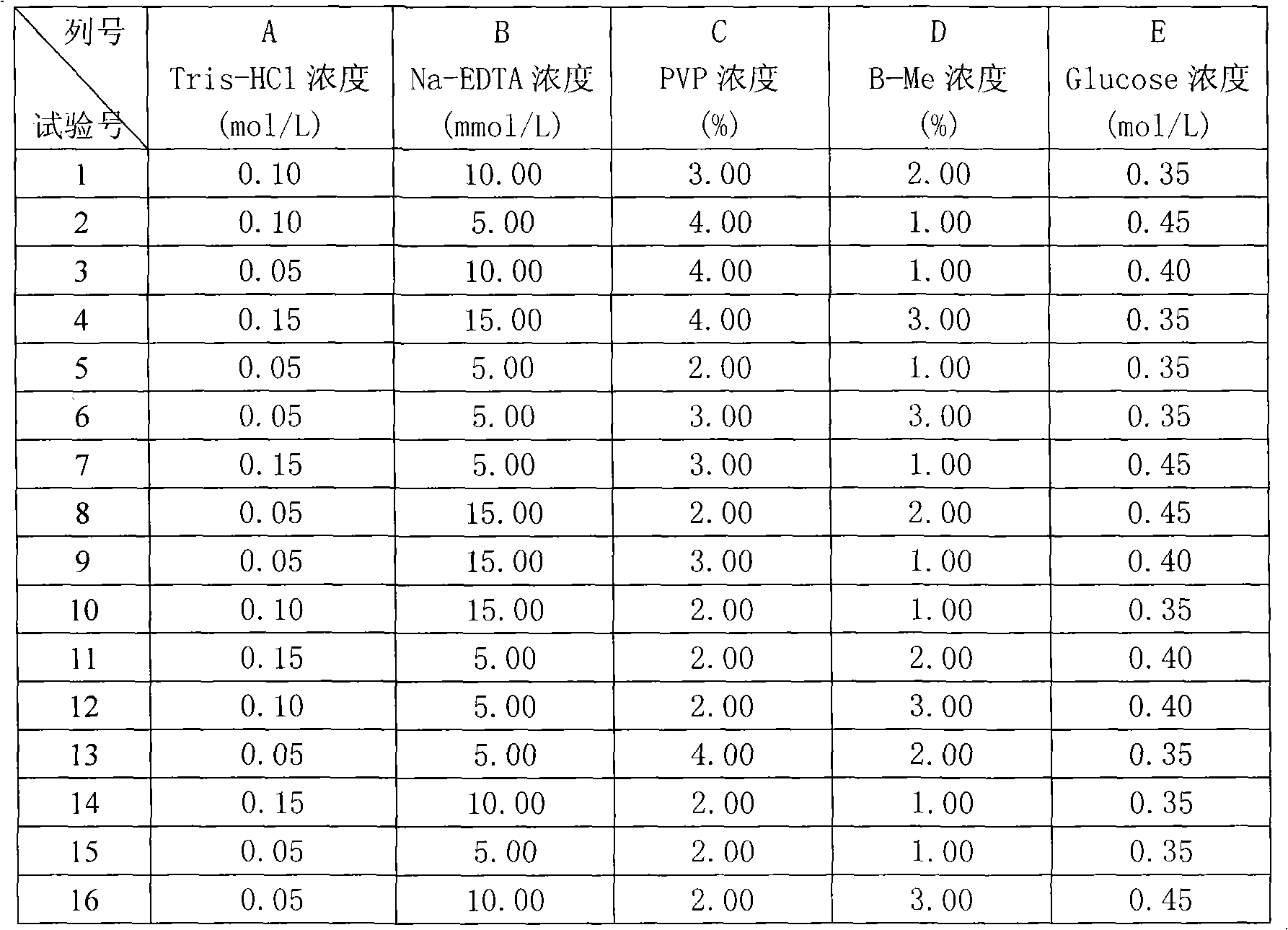Method for preserving rubber tree leaf tissues extracted by DNA (deoxyribonucleic acid)
A preservation method and technology of tree leaves, applied in the biological field, can solve the problems of inconvenient carrying, high power consumption, high heat dissipation, etc., and achieve the effect of facilitating remote sampling, avoiding browning, and simple process
- Summary
- Abstract
- Description
- Claims
- Application Information
AI Technical Summary
Problems solved by technology
Method used
Image
Examples
Embodiment 1
[0024] 1. Take out the sample after short-term or long-term storage, melt it at room temperature, transfer a part of the liquid sample to a 1.5ml centrifuge tube with a 1ml pipette tip with the front part cut off, and centrifuge at 12000rpm for 15min at 4°C.
[0025] 2. Discard the supernatant, add 650ul 2×CTAB extraction buffer preheated at 65°C to the precipitation (2×CTAB extraction buffer composition: 0.1M Tris-HCl, 20mM Na-EDTA, 1.4M NaCl, 2% CTAB, 2% PVP, 1% (V / V) B-Me), vortex or use a clean toothpick to stir the precipitate, and incubate at 65°C for 30-60 minutes (the time of incubating can be as long as several hours).
[0026] 3. Add an equal volume of chloroform: isoamyl alcohol (24:1), invert back and forth more than 50 times, let stand at room temperature for 10 minutes, centrifuge at 10,000 rpm for 15 minutes at 15°C or room temperature, and carefully transfer the supernatant to a new centrifuge tube (care should be taken to prevent excessive DNA fragmentation). ...
Embodiment 2
[0033] 1. Take the sample out of the mailed foam box or -20°C refrigerator. After melting at room temperature, transfer a part of the liquid sample to a 10ml centrifuge tube with the blue pipette tip with the front end cut off. Centrifuge at 10000rpm for 20min, discard the supernatant.
[0034] 2. Add 3ml of 65°C preheated 2% SDS extraction buffer (2% SDS extraction buffer composition: 100mM Tris-HCl, pH 8.0, 50mM EDTA, pH 8.0, 100mMNaCl, 2% SDS, 1% ( V / V) B-Me), and loosen it with a copper wire, vortex to mix, and take a water bath at 65°C for 30-45 minutes (the water bath time should not be too long, it will easily degrade if it is too long).
[0035] 3. Add 3ml of chloroform:isoamyl alcohol (24:1) and turn over more than 50 times, let stand at room temperature for 10min, centrifuge at 15°C and 10,000rpm for 20min, transfer the supernatant into a 10ml centrifuge tube (handle with care to prevent DNA too many breaks).
[0036] 4. Add 0.6V pre-cooled isopropanol, turn over s...
PUM
 Login to View More
Login to View More Abstract
Description
Claims
Application Information
 Login to View More
Login to View More - R&D
- Intellectual Property
- Life Sciences
- Materials
- Tech Scout
- Unparalleled Data Quality
- Higher Quality Content
- 60% Fewer Hallucinations
Browse by: Latest US Patents, China's latest patents, Technical Efficacy Thesaurus, Application Domain, Technology Topic, Popular Technical Reports.
© 2025 PatSnap. All rights reserved.Legal|Privacy policy|Modern Slavery Act Transparency Statement|Sitemap|About US| Contact US: help@patsnap.com



